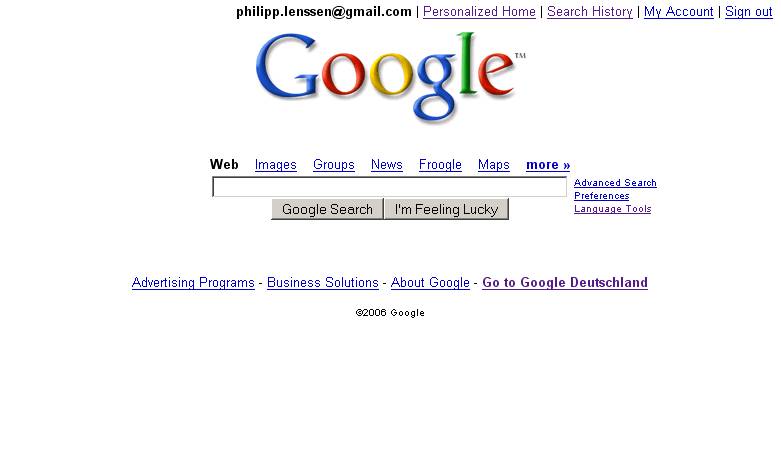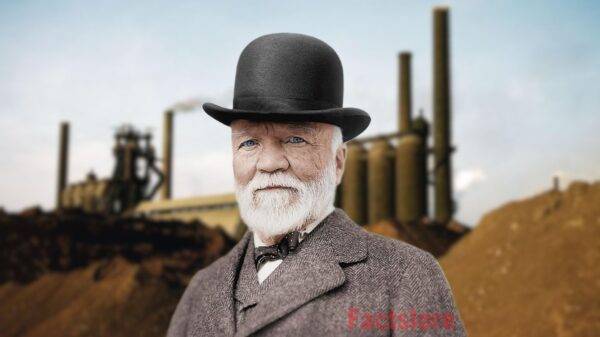In the early days of the Internet, Yahoo emerged as a pioneering force, revolutionizing the way people accessed information, communicated, and explored the digital world. Founded in 1994, Yahoo quickly became one of the most popular and influential internet companies of its time. Its rise to prominence was fueled by a combination of innovative services, such as Yahoo Mail, Yahoo Messenger, and its search engine, which attracted millions of users worldwide.
However, despite its early success and immense potential, Yahoo eventually faced a tumultuous journey marked by strategic missteps, leadership challenges, and fierce competition, leading to its eventual fall from grace. Let’s delve into the fascinating journey of Yahoo, once the most visited website on the internet, and explore the series of events that shaped its destiny.
The Birth of Yahoo
In the early ’90s, the internet was an unruly and disorganized space devoid of search engines. Two college friends, Jerry Yang and David Filo, recognized the need for a solution and created a directory of their favorite websites. This directory, known as “Jerry and David’s Guide to the World Wide Web,” served as a personal collection to keep track of their preferred sites conveniently.

In 1994, Netscape launched their web browser, Navigator, which quickly gained popularity among users. Navigator featured a link to Jerry and David’s directory, leading to an exponential surge in its viewership. The sudden influx of visitors necessitated investments in servers and the hiring of staff to manage the growing submissions.
Jerry and David realized that their directory had evolved into something more than a personal project—it had transformed into a potential business venture. To solidify their position in the emerging market, they sought a catchy name and stumbled upon “Yahoo,” a term connoting boorishness or stupidity. The name resonated with their desired fun and energetic brand image.
Being the primary gateway to the internet for most users, Yahoo attracted a substantial audience. As the internet remained an unfamiliar territory, Yahoo’s user-friendly approach made it the go-to platform for discovering various websites. Harnessing the power of their extensive traffic, Yahoo ventured into advertising, offering companies the opportunity to display banner ads on their site.
Seizing Opportunities
Analyzing the data generated by their directory, Yahoo’s team realized they possessed valuable insights into users’ preferences and interests. This revelation paved the way for an expansion beyond mere link provision. Yahoo began developing its own products and services based on the most clicked categories and websites within their directory. By doing so, they aimed to increase page views, thus attracting more advertisers.
Capitalizing on user behavior patterns, Yahoo introduced a range of services catering to popular interests. Recognizing the high demand for chat rooms, Yahoo launched their own chat rooms instead of solely linking to existing ones. They followed this strategy across various domains, including shopping, file sharing, games, sports, finance, and more. This innovative approach not only enhanced user experience but also brought in additional revenue.
The Evolution of Yahoo’s Organizational Structure
In the realm of internet giants, Yahoo used to stand tall as a pioneer and an embodiment of diverse offerings. To achieve such a feat, Yahoo adopted a unique approach, distinct from traditional organizational structures. Instead of relying on a single unified system, Yahoo embraced a strategy of hiring numerous individuals and assembling them into specialized product teams, each with its own leader assuming the role of a CEO.

Essentially, Yahoo resembled a collection of independent startups, with each team dedicated to delivering a distinct service. By the turn of the millennium, Yahoo boasted an impressive portfolio of 400 diverse products and services. Users could spend an entire day online, immersing themselves within Yahoo’s vast ecosystem of websites. Surprisingly, the company’s original service, the directory, contributed to less than 20% of the overall page views. Over 80% of Yahoo’s web traffic gravitated towards the plethora of other offerings they had meticulously developed. In essence, Yahoo ceased to be merely a directory; it transformed into an embodiment of the internet itself—a one-stop destination catering to every need.
Yahoo’s Meteoric Rise and Missed Opportunities #1
Established in 1994 by two college friends in their dorm room, Yahoo experienced an extraordinary ascent, attaining a staggering market capitalization of $128 billion merely six years later. It solidified its position as the largest internet company worldwide, firmly etching its name in the annals of business history as one of the fastest-growing enterprises. Nevertheless, during this meteoric rise, Yahoo encountered a pivotal juncture that would forever alter its trajectory.
At the height of its success, Yahoo was presented with an opportunity to acquire a fledgling company from two ambitious students for a mere one million dollars—a paltry sum for a behemoth like Yahoo. Astonishingly, Yahoo declined the proposition, oblivious to the far-reaching consequences of their decision. The budding company they dismissed was none other than Google, a rising star that would ultimately revolutionize the digital landscape.
The Fallout and Google’s Ascendancy
When the dot-com bubble burst and internet company stock prices plummeted, Yahoo bore the brunt of the impact. Investor confidence waned, and numerous major advertisers either curtailed their ad spend or met their demise. Compounding the issue, the proliferation of websites rendered Yahoo’s manual directory updates inefficient.
In contrast, Google emerged as a trailblazer, introducing a superior system that facilitated rapid information retrieval. Consequently, Yahoo observed a significant exodus of its users migrating to Google. Regrettably, just a few years after dismissing the opportunity to acquire Google outright, Yahoo sought a licensing agreement with its erstwhile competitor. The objective was to integrate Google search into Yahoo’s websites, aiming to divert traffic back to Yahoo’s homepage. Initially, this approach seemed sensible, but in the long run, it proved catastrophic.
Yahoo users embraced Google search wholeheartedly, inadvertently providing Google with free advertising through its presence on Yahoo’s platform. Furthermore, Google’s introduction of search result ads, utilizing an ingenious algorithm to align ads with relevant search terms, bolstered their efficacy and profitability. Google’s ads became more pertinent to users, more cost-effective for advertisers, and subsequently more lucrative for Google. Capitalizing on its profits, Google ventured into partnerships with other prominent internet companies, even securing the coveted position as the default homepage for the Firefox web browser. In no time, Google found itself in an unprecedented position of power.

Google’s search ads business proved immensely profitable and efficient. As Google invested more in promoting its search engine, the corresponding increase in search ad revenue amplified its overall profits, allowing for even more substantial investments. In contrast, Yahoo’s banner ads paled in comparison, yielding meager profits and narrower profit margins. Consequently, advertisers swiftly redirected their marketing budgets to Google, effectively eroding Yahoo’s user base and advertising clientele—ironically, a scenario that Yahoo had earlier passed on when it declined the opportunity to acquire Google.
Realizing the urgent need for a drastic measure, Yahoo approached Google once more, inquiring about the acquisition cost. Initially, Google quoted $1 billion, a figure that Yahoo eventually agreed upon. However, Google swiftly revised its asking price to $3 billion, then $5 billion, effectively derailing the deal. Subsequently, Yahoo severed ties with Google entirely and embarked on the ambitious endeavor of building its own search engine, seeking to directly compete in the fiercely competitive landscape.
However, it soon became evident that Yahoo had already surrendered in the battle for search supremacy, rendering its directory increasingly obsolete with each passing day. Consequently, in order to uphold their prevailing position, Yahoo had to redirect their efforts towards their ancillary offerings. An auspicious moment arrived for Yahoo to seize this opportunity in 2006.
Missed Opportunities #2
In a groundbreaking meeting, Yahoo executives convened with Mark Zuckerberg, the renowned founder of Facebook. A monumental deal was on the table—an acquisition offer of $1 billion. While Zuckerberg himself was initially reluctant to proceed, his board of directors and investors made it clear that Yahoo’s substantial offer had to be considered seriously. However, just moments before sealing the agreement, Yahoo made a fatal misstep by attempting to negotiate a lower price. Instead of sticking to the original offer, they proposed a diminished sum of $850 million. Unbeknownst to Yahoo, this approach would prove disastrous and backfire in an unprecedented manner.

Unanticipated by Yahoo, Zuckerberg found himself elated after the meeting’s conclusion. The board had stipulated that if Yahoo offered $1 billion, the deal had to be accepted. However, since the revised offer fell short of this mark, Zuckerberg made the fateful decision to decline the acquisition. Consequently, he retained full control of Facebook, safeguarding its status as an independent company. Little did Yahoo realize that their attempt to save a few million dollars would ultimately result in them forfeiting an opportunity to own a company that presently boasts a valuation of approximately one trillion dollars.
Perhaps the most astonishing aspect of this saga is the extensive list of acquisitions and mergers that Yahoo pursued throughout its history. Notable among these endeavors was the investment of $5.7 billion in recycledbroadcast.com. However, Yahoo’s shortsightedness becomes more apparent when considering their decision to pass up on deals with tech giants like Facebook, Google, eBay, and even YouTube. One cannot help but ponder how different the landscape of the internet and the world as a whole might appear if Yahoo had capitalized on these opportunities. In an alternate reality, we might find ourselves enjoying Magnate’s Media on Yahoo Video at this very moment.
However, let us momentarily pause and acknowledge the complexity of assessing these missed opportunities with the benefit of hindsight. At the time, these entities were merely fledgling companies within a vast sea of countless others. Even if Yahoo had successfully acquired Google, Facebook, and eBay, there would be no guarantee that these ventures would have flourished to the same extent under Yahoo’s stewardship. It is essential to recognize that Yahoo’s decline was not solely attributable to external competition but rather a multitude of internal issues that plagued the company.
Yahoo’s Decline: The Internal Mess that Led to a Downfall
An insightful memo, known as the Peanut Butter Manifesto, shed light on the problems plaguing Yahoo. It likened the company’s actions to spreading peanut butter too thin, indicating the dispersion of resources. The author emphasized that Yahoo’s attempt to focus on everything resulted in a lack of focus on anything in particular.
Yahoo suffered from a lack of clarity regarding its identity and purpose. During a company retreat, employees were asked to associate a word with the names of various companies. While “search” was synonymous with Google, “payments” with PayPal, and “auctions” with eBay, Yahoo elicited different responses from different employees. This internal confusion reflected the company’s inability to establish a clear vision of its role in the market.
Furthermore, the memo pointed out that Yahoo had an excessive number of employees with overlapping responsibilities. Despite acquiring Flickr, a photo-sharing site, Yahoo still had a separate team working on Yahoo Photos, which essentially offered the same service.
The Few Other reasons for Yahoo’s Decline are discussed below.
1. Disintegration instead of Unity
Rather than operating as a united entity with a cohesive vision, Yahoo treated itself as a conglomerate of startups. This approach had initially fueled the company’s growth but eventually led to chaos. Yahoo became segregated into numerous independent teams, lacking integration. Different products and services adopted disparate code systems, designs, and colors, exacerbating the lack of cohesion within the organization.
2. Missed Microsoft’s Lifeline Offer
Despite the turmoil within Yahoo, they were presented with a lifeline in 2008 when Microsoft offered to acquire them for a staggering $44 billion. The intention behind Microsoft’s offer was to counter the growing dominance of Google. However, Yahoo declined the offer, asserting that it undervalued their true potential. Unfortunately, their decision would soon turn into regret as their share price plummeted, and their company’s value diminished to a mere $14 billion—less than a third of Microsoft’s initial proposal.
3. The Leadership Instability
One of the primary causes of this downfall was Yahoo’s lack of clear direction, exacerbated by its revolving door of CEOs. Terry Semel served as the CEO in 2007, followed by the original founder, Jerry Yang, from 2007 to 2009. Carol Bartz assumed the role from 2009 to 2011, succeeded briefly by Scott Thompson in the first half of 2012, until Marissa Mayer took over during the summer of the same year.
The frequent changes in leadership resulted in five CEOs within a span of six years. The inability to reach a consensus on the ideal leader for Yahoo, coupled with the impatience for immediate results, led to a continuous cycle of replacements. Consequently, this further fueled the chaos within the organization. It is worth noting that Yahoo modified its mission statement at least 24 times, highlighting the lack of a clear plan or vision even at the upper management level.
4. Inability to Adapt to the Mobile Era
Yahoo’s indecisiveness and slow response to the rise of mobile internet further worsened its situation. The company’s phone apps paled in comparison to those of its competitors, resulting in a decline in users for popular services like Yahoo Mail. People shifted to email apps instead of relying on Yahoo’s websites, highlighting the company’s failure to adapt to changing user preferences.
5. Toxic Internal Culture and Rating System
Yahoo introduced an internal rating system for its employees, which had unintended consequences. Managers were required to rate a certain percentage of their team as exceeding targets and another percentage as falling short. This system, intended to improve efficiency, fostered a cutthroat culture where employees viewed each other as competitors rather than collaborators. The resulting environment led to backstabbing and hindered teamwork.
6. Struggle to find Its purpose
When Yahoo initially launched its directory, it effectively addressed a genuine problem, simplifying the early internet experience. However, with the emergence of search engines that replaced the necessity for a directory, Yahoo struggled to find its purpose. It became the embodiment of a generalist, excelling in none. Yahoo attempted to do numerous things, yet it failed to maintain its superiority in any specific domain.
7. Lack of Innovation
Gradually, superior alternatives surpassed Yahoo’s extensive range of products and services. Amazon outperformed Yahoo Shopping, WhatsApp overshadowed Yahoo Messenger, Gmail took over Yahoo Mail, and Quora surpassed Yahoo Answers. These competing companies focused on mastering one specific aspect before expanding into other domains, while Yahoo lost its distinct identity.
The Persistence of Yahoo’s Legacy
At one time, Yahoo truly reigned as the internet king. However, a combination of poor decisions, indecisiveness, average products, intense competition, and inadequate leadership caused its downfall. In 2017, Verizon acquired Yahoo for a mere 4.48 billion dollars, a fraction of the amount Microsoft had offered. Nevertheless, Verizon’s efforts to revive Yahoo were in vain, leading to its subsequent sale in 2021.
Although Yahoo still generates revenue. In fact, some of their products, such as Yahoo Mail, continue to attract substantial traffic. However, this is primarily due to users who set up their email addresses with Yahoo years ago and have yet to migrate to an alternative platform. Without substantial innovative breakthroughs, Yahoo appears destined to gradually fade into obscurity. This begs the question: what will be the next monumental empire of the internet?
Paving the Way for the Next Internet Empire
With Yahoo’s decline, a void emerges, leaving us to ponder the identity of the next internet empire. As history has shown, the internet is a dynamic landscape, and new players constantly emerge. The future belongs to those who embrace innovation, adapt to changing user demands, and deliver exceptional experiences.
Yahoo’s journey from the pinnacle of the internet to its current state serves as a cautionary tale. It demonstrates the importance of specialization, innovation, and strategic decision-making in maintaining a competitive edge. As we await the rise of the next internet empire, it is clear that the ever-changing digital landscape demands unwavering adaptability.











